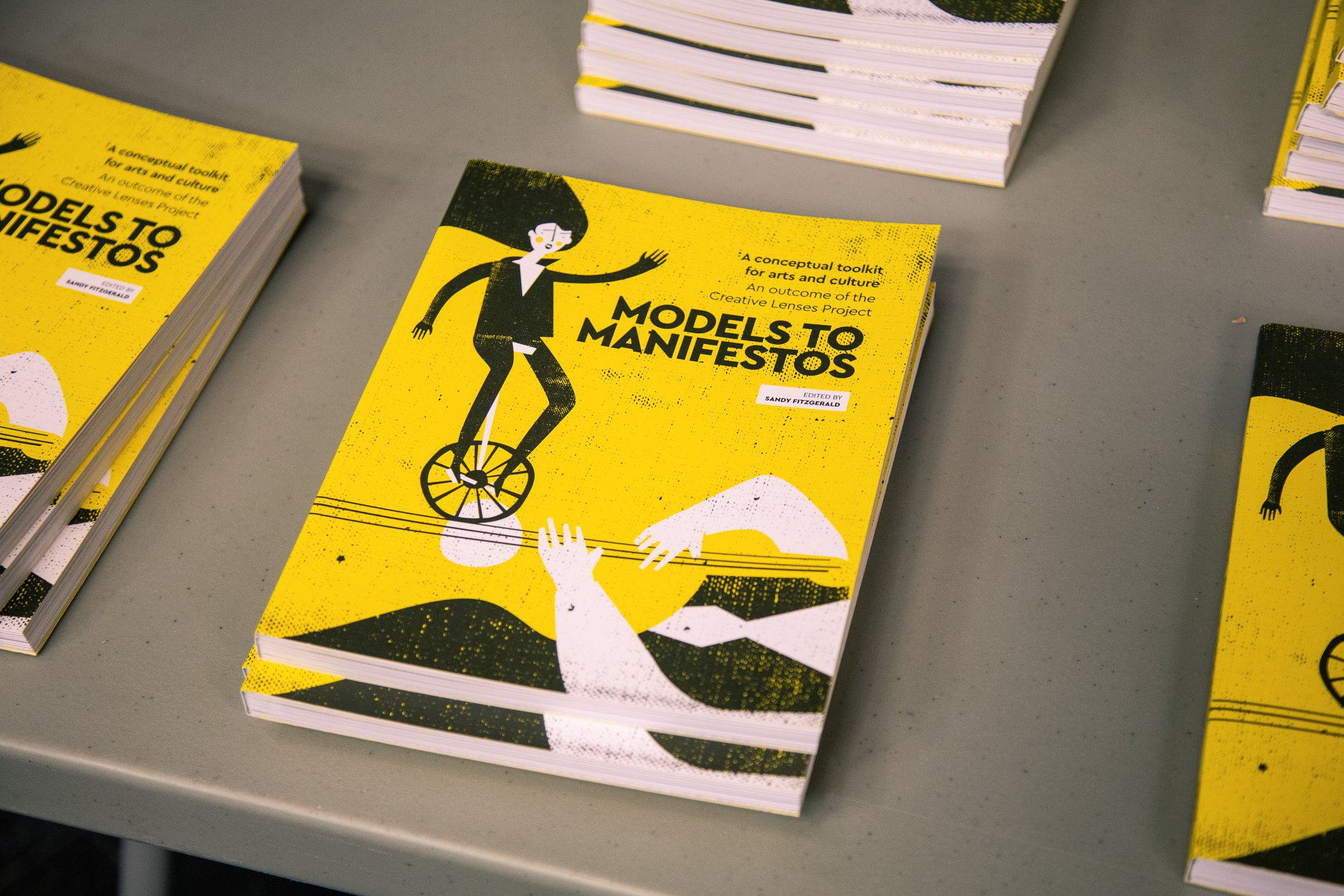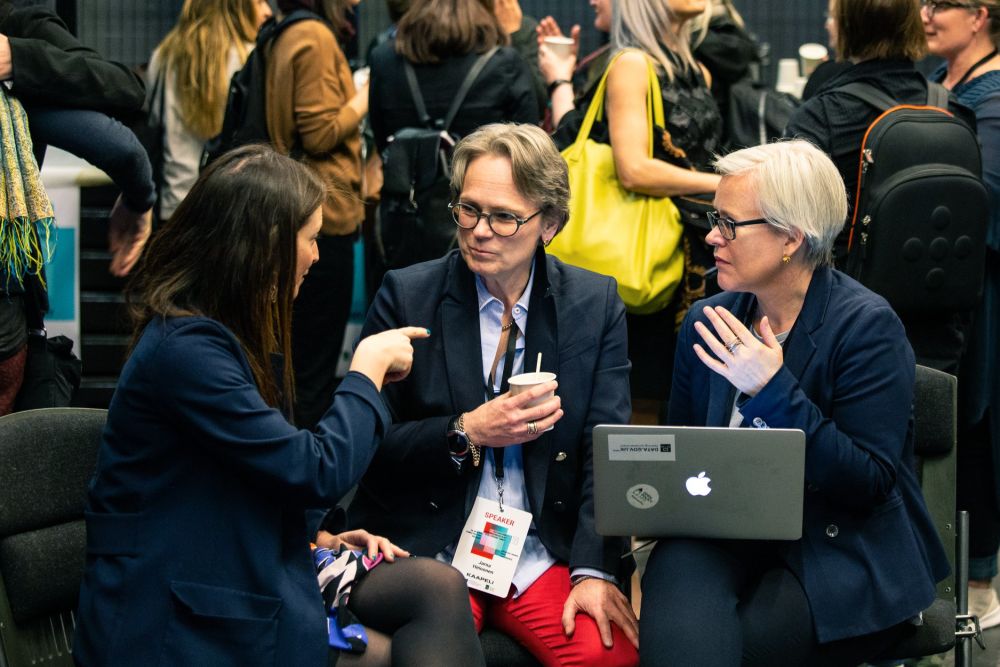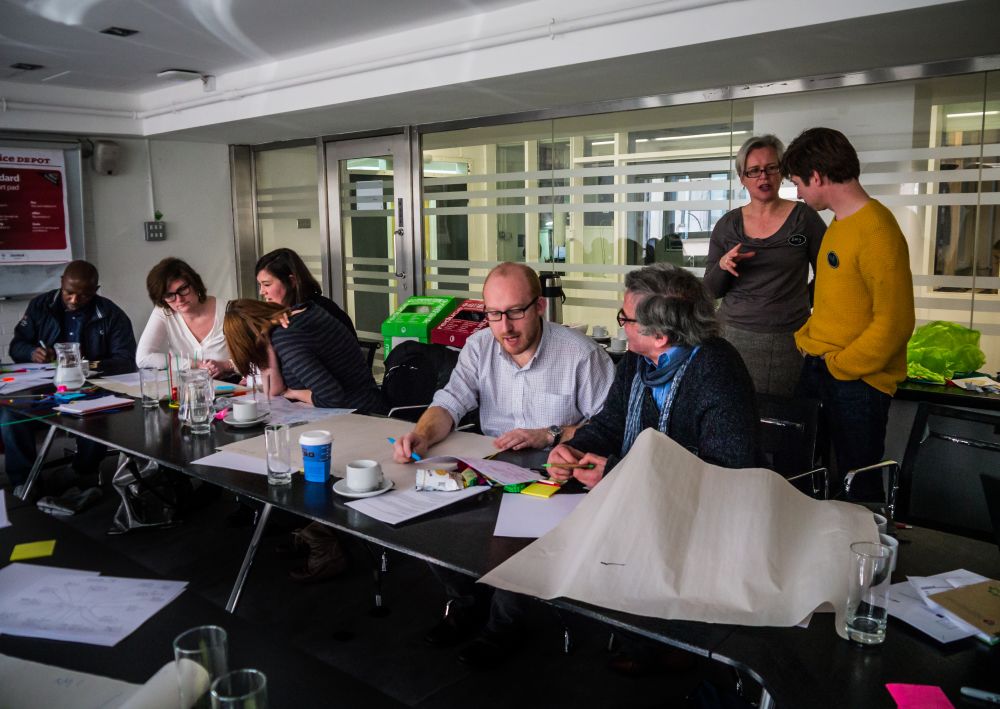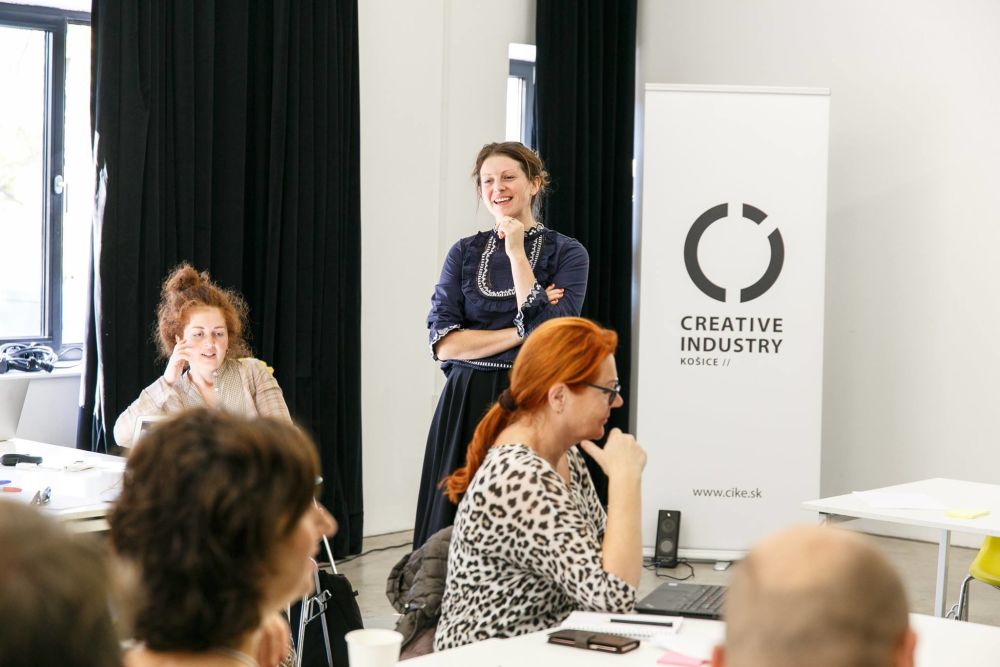Creative Lenses is a four-year (2015-2019) project that seeks to make arts and cultural organisations more resilient and sustainable by improving their business models and developing their long-term strategic and innovation capacities.
Creative Lenses began with an ambition to explore the vexed yet crucial issue of sustainability in the arts and cultural sectors. The project set out to ask difficult questions about the relationship between financial sustainability and social, artistic or cultural objectives. The assumption in the EU’s cultural policies, particularly those associated with the European Commission’s Creative Europe programme appeared to be that the answer to the issue of financial sustainability would come in the form of transformation in business models. Was this really the case? Were ‘business models’ part of the answer, or part of the problem? How would practitioners respond to the demand to work with a concept with its origins in the private sector?
Gallery
Partners
The team behind Creative Lenses set out to answer these questions as part of a four-year collaboration project (2015-19) funded by Creative Europe. The team included cultural organisations, specifically cultural venues and performing arts companies, cultural networks, universities, incubators for ‘creative business’ and consultants with experience of the sector. This meant some of us were seeking to make change and support the process of change; others were interested in understanding the causes and consequences of the type of change occurring in the cultural sector and others were interested in reflecting on the role of policy interventions in shaping the nature of change. What happened across the four years? What did we learn? Where next?
Project Journey
Perhaps little surprisingly, some of the assumptions guiding the original project design had to change. Reshufflings during the project (with responsibility for research passing from one partner to another) created an opportunity for this reconfiguration. This was a good thing as it became clear that any notion of a fixed menu of ‘new’ business models that could be packaged up and replicated by organisations working in different social, political, economic and cultural contexts was not practically viable. Although the idea of choosing a model is an attractive proposition, the effects of context on a business model cannot be overstated. This lead us to the view that business models might be part of an answer (not the answer), but not in the way that was originally thought. Focus groups undertaken by the University of Basilicata in 2015 to explore the needs, wants, expectations and challenges of arts and cultural organisations in several European cities: Amsterdam, Athens, Brussels, Helsinki, Lecce, London, Lund and Zilina along with eight one-day forums also informed this view.
At this point (spring 2017) the research team at UAL decided to approach the topic of business models differently. We immersed ourselves in articles and books about business models written by management scholars. This process confirmed our suspicions that business models were not about money-making alone but about combining resources to create value, a process involving relationships with partners, audiences, and funders ‘Insights from Management Literature to Understand Business Models in Arts and Cultural Organisations’ summarises this reading. We also looked into contemporary cultural policy and cultural industries debates where authors rightly expressed concern that the language of business models was part of a neo-liberal discourse which accepted uncritically might influence organisational practices in all sorts of troubling ways (the working paper 'New Business Models’ for Cultural Organisations: A Critical Literature Review’ summarises this reading). Based on this reading and on discussions with partners we realised there was too much in the way of assumption and not enough empirical work as to whether and how ‘business models’ and other similar discourses influences the arts and cultural sector at the level of organisational practice. Access the Business Model Knowledge Base, a digital platform containing more than one hundred resources addressing business model innovation in the cultural sector.
Following this reconfiguration, our work on business models, became about understanding the characteristics of business models in arts and cultural organisations, whether and how business models were changing and why and how practitioners working in these domains responded to the concept of the ‘business model’ ‘Modelling Shared Value and Mediating Values: Describing Business Models in Performing Arts Organisations and Cultural Venues’ summarises our findings about the characteristics of business models). Was this a construct that could be co-opted from its origins in the private sector by practitioners and researchers looking to draw attention to the assumptions and contradictions embedded in certain cultural policy statements?
Research Design
To study these questions, we drew inspiration from action-research approaches. We wanted to get close to how practitioners make sense of the contexts they are embedded within and to understand how they engage with concepts such as ‘business models’ as individuals and within group settings. Although collaborative enquiry is never straightforward, Creative Europe collaboration projects are particularly well suited to an approach-based learning through practical action. In addition to desk research and an online survey on business model change conducted by BOP Consulting (Online Survey Final Report), the research team at UAL worked with Olivearte Cultural Agency on the Catalyst Programme (summarised in this video produced by partner Trans Europe Halles).
Between April 2017 and September 2018 eight organisations were given financial resources and mentoring support to make changes to their business model in an open-ended way. The research team at UAL gathered ethnographically-informed data relating to this process, observing meetings, public events, undertaking one-to-one and group interviews and facilitating collaborative sense-making workshops in Helsinki and London. This process gave us a fine-grained understanding of the distinctive characteristics of business models in arts and cultural organisations (specifically cultural venues and performing arts companies) and the particular way practitioners responded to the demand to make change using the ‘business model’ as a tool. Our profiles of the 8 organisations who participated in the Catalyst Programme are available on the website.
Project Findings
Our learning from this process is outlined in ‘Business Models for Arts and Cultural Organisations: Research Findings from Creative Lenses’. At the heart of our findings are the following key points:
- The idea of the ‘business model’ is valuable to arts and cultural organisations as an imperfect tool, or heuristic’ to guide organisational development. Business models are not transforming and nor is transformation required or desired. But business models do need to adapt to a changing external environment. Business modelling, a process whereby organisations can identify the range of activities and relationships (internal and external) they undertake where value is exchanged is a useful mechanism because it encourages organisations to consider their position in cultural ecosystems. This can be a way of identifying opportunities but, more importantly, it illustrates that the vexed question of financial sustainability cannot be answered by an organisation acting alone but requires change across the ecosystem. This means business modelling needs to be a collaborative process involving funding bodies, government departments, arts and cultural organisations and audiences. Business modelling can start with an individual organisation but it should not end there.
- Business modelling does not represent a politically neutral solution to the problems facing arts and cultural organisations. Due to its emphasis on cultural ecosystems and the effects of the wider financial and political context on the latitude arts and cultural organisations have to fulfil their artistic, social, cultural and environmental missions, a process of business modelling demonstrates the interdependence of cultural organisations on the wider ecosystem for their sustainability and survival. This tells us something important about the prevailing theory of change within cultural policy. As it currently stands, changes in the financial sustainability of arts and cultural organisations are assumed to come about through intervention at the level of the organisation through skills development and capacity building. The evidence from Creative Lenses tells us this assumption that the deficit lies with arts and cultural organisations themselves is inaccurate (and leads practitioners to blame themselves when the external environment forces them to change their priorities). For business models to become more sustainable (financially and otherwise) we need systemic change.
- Business modelling is an underdeveloped practice within arts and cultural organisations. Several of the organisations in our sample compartmentalised their operations into ‘creative’ tasks and those to do with how the organisation functions and sustains itself. We found this separation has to do with the institutional logics – the organizing principles or beliefs that guide behaviour in a particular field and shape decision making and activity. In other words, practitioners felt it improper to approach the question of their business models as a creative task. While a ‘creative’ approach is not a panacea, applying some the creativity that defines these organisations to the task of designing business models from the bottom-up would grant practitioners more agency to design business models that respond to contexts and values whilst also promoting difference and diversity in the models themselves. A ‘successful’ business model has to do with more than financial sustainability. Not all business models are created equal and some rely on practices that contribute to inequalities and exclusions in cultural participation. Turning the lens on business models provides a way of starting to think more critically about how organisations survive and the political and policy steps forward needed to create the conditions where the pursuit of financial sustainability does not have to be at the expense of the potential for arts and cultural organisations to enrich people’s lives and society.
It is perhaps too early to say what the results of Creative Lenses will be, but in approaching business models as a question of values and of ecosystems we have hoped to make a significant step towards an effective conversation within the sector about the way matters of financial, social, environmental and artistic sustainability are intimately linked to broader economic and social conditions. This is both necessary and desirable in a climate where operational detail of how arts and cultural organisations function has come under the spotlight.





